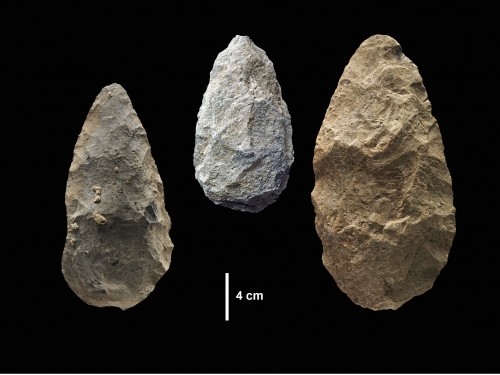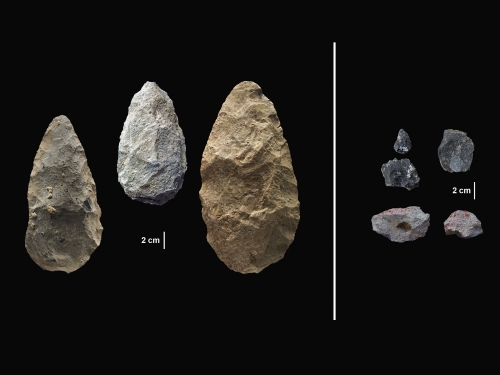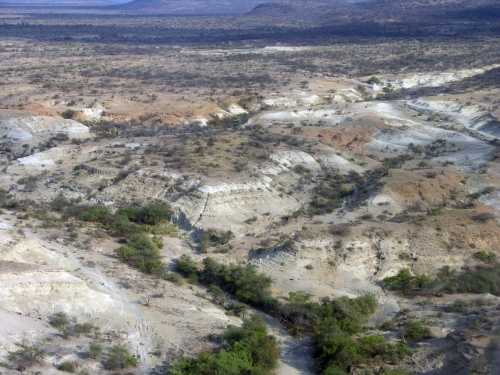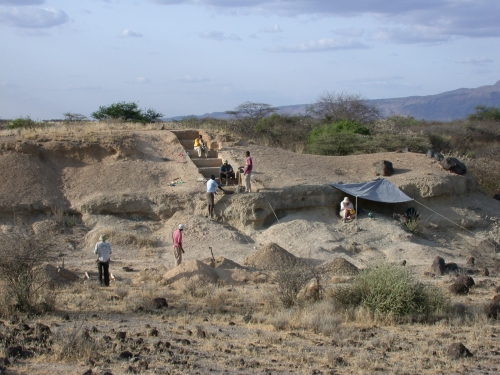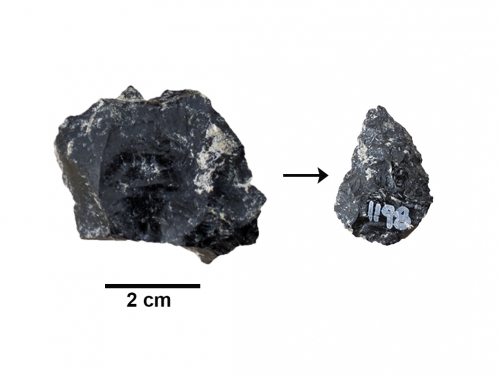The emergence of long-distance trade, the use of color pigments and the crafting of sophisticated tools all approximately date to the oldest known fossil record of Homo sapiens and occur tens of thousands of years earlier than previous evidence has shown in eastern Africa. Hoping to understand what might have driven such fundamental changes in human behavior, the research team integrated data from a variety of sources to assess and reconstruct the ancient environment in which the users of these artifacts lived. Their findings suggest that the period when these behaviors emerged was one of changing landscapes and climate, in which the availability of resources would have been unreliable.
At this Olorgesailie Basin excavation site, the Smithsonian team discovered key artifacts and pigments. Fossil bones found at the site also showed that a significant change in the kinds of animals in this region occurred around the same time as the transitions in human behavior. This turnover signaled that environmental conditions significantly changed and affected which animals could thrive in the region.
Photo courtesy Human Origins Program, Smithsonian



